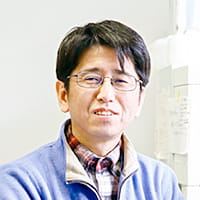Research summary
Research outline
Immune system protects us from pathogens through a variety of pathways. For this purpose, it is important to distinguish “self” from “non-self/pathogens”, so that immune cells express various types of innate receptors. For example, Toll-like receptors and C-type lectins recognizing various components of pathogens. Among them, the C-type lectin molecule not only acts to eliminate pathogens, but also affects direction of the subsequent specific immune response through antigen presentation to T cells and cytokine production, resulting in adequate responses against pathogens. First of all, in the viewpoint of protection from infection, we are focusing on the identification of new lectin molecules, and on their analyses of sugar structures to be recognized. In addition, we investigate the functions of the C-type lectins under non-infectious conditions using various mouse disease models.
It is also known that the innate receptors are often abused by pathogen, e.g., through attachment to the target cells and suppression of the host immune responses. In these, the immune-suppressing systems has been improved during the long history of a struggle for existence between hosts and pathogens. Our second challenge is to identify the immunosuppressive factors derived from pathogens, and their application to controlling excess inflammation like sepsis. Substances derived from such “already confirmed effects in humans” immunoregulatory factors are likely to act in humans. Our aim is the development of synthetic polysaccharides to control sepsis and cytokine storms using this approach.
On the other hand, among T cell populations, γδT cells express a low-diversity TCR and develop without negative selection, showing innate-like properties unlike αβ T cells with high diversity and strict self-non-responsiveness. There are many unclear points in their development, differentiation, ligands and functions. γδ T cells are also the first T cell to appear during mouse development, and are thought to be a type of the primitive T cells. Our third research subject is about the process of development and differentiation of the γδT cells, and to know their functions, especially, their immune-controlling activities using mouse disease models.
Main themes
- Functional analyses of PRRs on dendritic cells and macrophages, and subsequent responses.
- Identification of immunosuppressive factors of pathogens and their applications for excess immune responses, e.g., sepsis.
- Cross talk between PRRs and hormone receptors.
- Functional analyses of pathogen recognition receptors in disease models.
- Development and function of γδT cells.
Member
|
TAKAHARA, KazuhikoAssociate Professor |
ktakahar*zoo.zool.kyoto-u.ac.jp See faculty information |
|---|
- Please note that the @ symbol has been replaced by *.
Access
Faculty of Medicine Campus, Faculty of Medicine Bldg. G South Campus Research Bldg.

